Claim that by 2026 AI chatbots/virtual agents will make significant gains against traditional search may be too early to predict
A report from Gartner on February 19th of this year, caused a bit of a stir in the digital marketing world. According to the press release associated with the report, they made the claim that search traffic volume would fall 25% by 2026, as AI chatbots and other virtual assistants gain in popularity.
Obviously we were intrigued by the prediction, as likely many of you were as well. So we looked at the clickstream data surrounding traditional search vs. AI-assisted search, to see if there were any early indicators of this shift taking place.
A Mixed Bag of Inbound Traffic Indicators
Looking at just the inbound traffic to Bing.com, Google.com, OpenAI.com and Yahoo.com from January 2023 through the end of that calendar year, we found no appreciable shifts in total search volume. For instance, Google.com starts the year representing 91.5% of the total traffic to these sites, and then ends the year down less than a single percentage point to 90.7%.
Meanwhile OpenAI.com, an early darling of the consumer-facing AI race for search volume, starts 2023 with a small bump in its traffic volume percentage from February to April, rising to as high as 3.1%, then settling back into a consistent 1.1% to 1.4% of total volume.
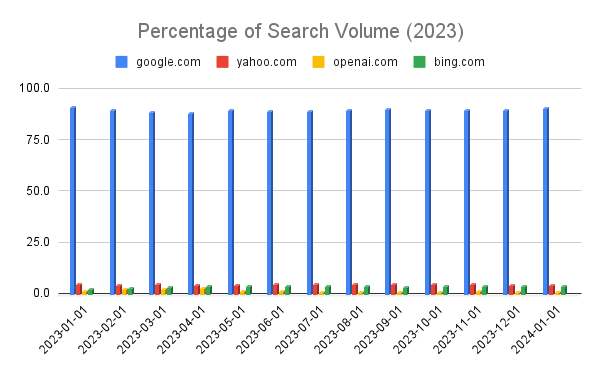
Where we did see movement in favor of AI, however, was in the percentage of users who conducted one or more searches using an AI agent during a given month.
The numbers show that OpenAI.com and Bing.com — both of whom widely promoted their AI search tools — experienced significant increases in unique user interest during 2023. OpenAI.com captured a seven point bump to 17.9% of the total audience, while Bing.com had a nearly 6% lift to 15.1% of the search audience.
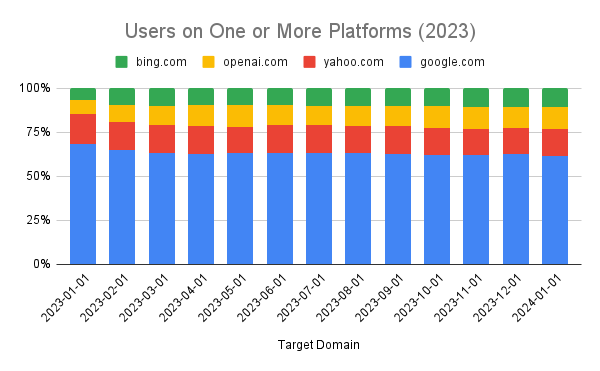
Yet, as impressive as these increases in users investigating AI search may seem, Google.com continues to dominate the majority of search volume over all. There’s definitely a trend toward usage of AI-assisted search, but we find almost no indication that traditional search is on a path to a 25% decline.
Signs of a Novelty Factor
Delving deeper into Datos’ clickstream data, we uncovered more potential problems with the overall prediction.
There seem to be clear indications of a novelty factor at work. And while novelty in and of itself is not a bad thing, if it isn’t followed with a consistent behavior change, we can’t really call it a trend.
Take the above Bing.com numbers for instance. If we credit the inclusion of AI search tools on the platform as the cause of the unique user bump, it would seemingly serve to solidify the predicted 25% drop. Yet when we consulted our panel data further, we found that only between 4% and 9% of users used Bing Chat (their AI agent) in any given month during 2023. What’s more, of those that did use it, only two to four searches were conducted over the ensuing month.
Which brings up an even more surprising finding.
While all of the traditional search engines had repeated searches from each user over the course of a month, the AI chatbots all displayed initial enthusiasm, followed by a steep decline in usage.
Using the next two charts to illustrate this point, we see the average Google.com user searched with the platform repeatedly over a 120 day period. This suggests a healthy segment of people are conducting a Google search almost daily.
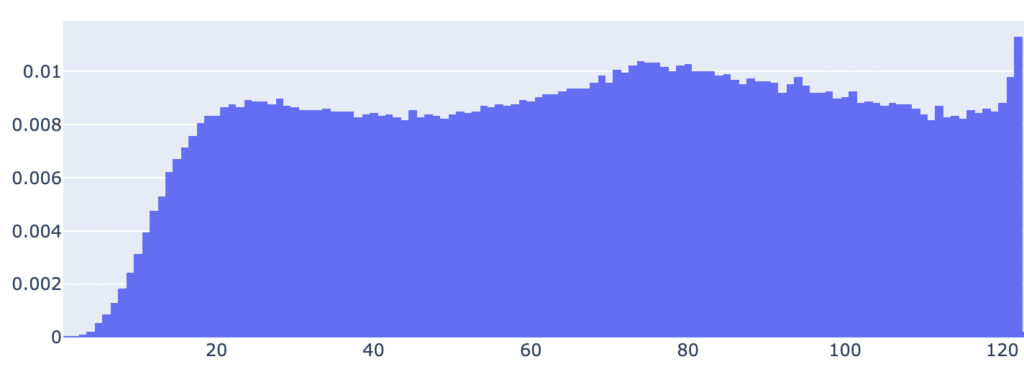
In contrast, the average visitor to OpenAI.com over the same period reveals a markedly different story. Here we see the typical user will investigate the tool, try it a few times and then seemingly loses interest as the search volume drops off a proverbial cliff.
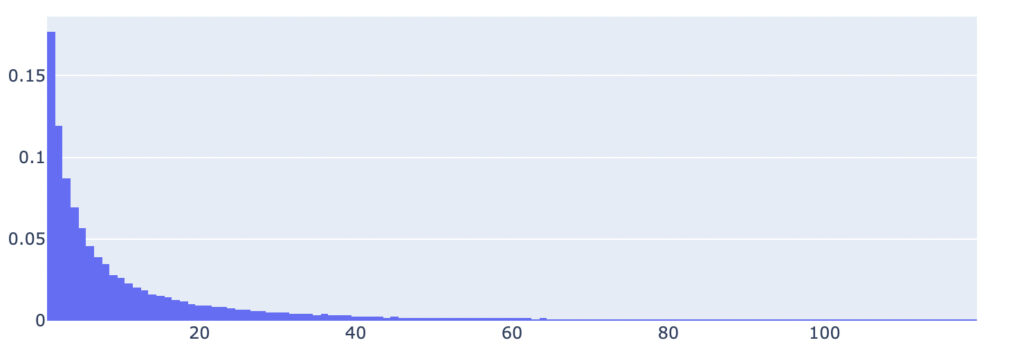
While we wouldn’t go so far as to claim AI search is a fad — because it’s not — the data does hint at a potentially hidden bubble that needs to be investigated further. If anything, it may be indicating the technology would need significant improvement before it could seriously challenge Google’s dominance, and that 2026 is not nearly enough time to achieve that.
Referrals Matter
Finally, we looked at referral traffic volume. For this we turned to our recently completed joint research study with SparkToro, entitled, “Who Sends Traffic on the Web and How Much?”
While this project looked much more broadly at all traffic referrers online, as you can see in the graph below, it does also provide a specific look at the top search providers.
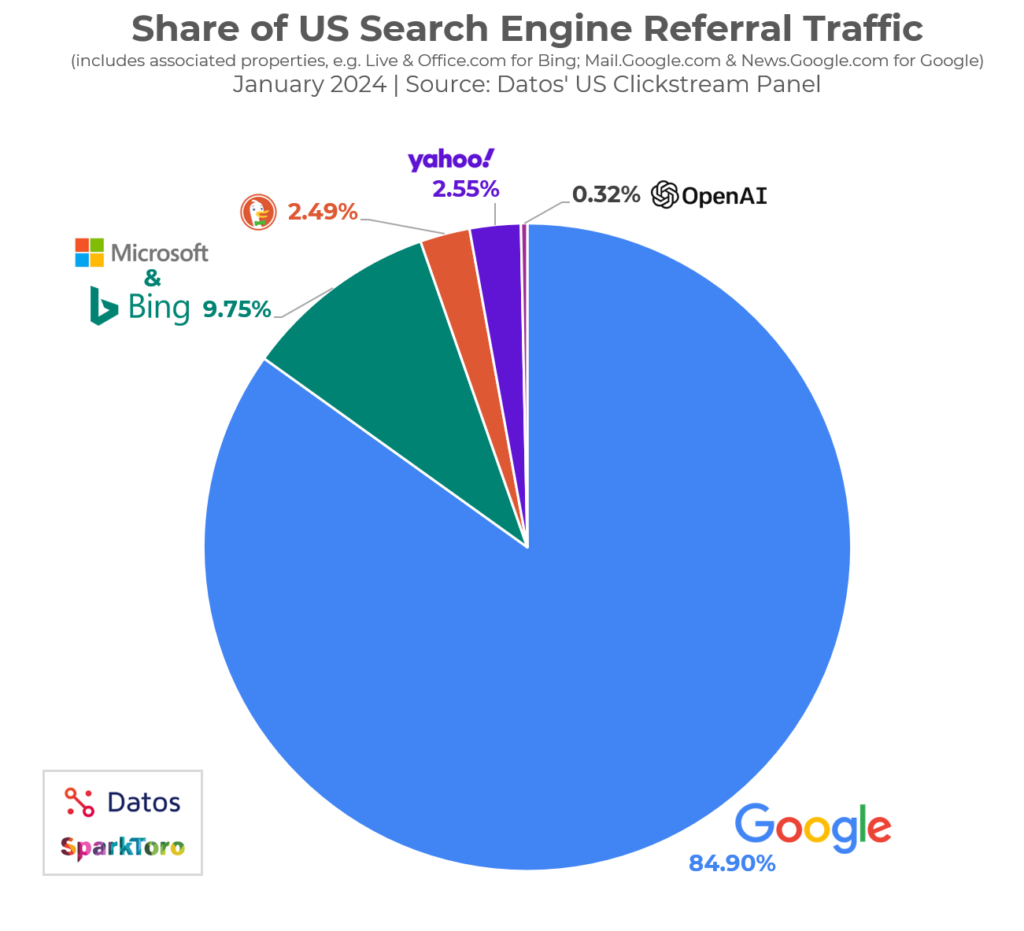
What’s notable here is that in search we assume that referrals represent the single most important use of a platform. After all, there’s a reason the most popular search from the typical start page is “Google.” Users are looking to navigate to where they are going, rather than expecting immediate answers.
Google.com, Yahoo.com and Bing.com are effective at referring traffic, showing referral numbers that are commensurate with their overall volume of visits. However, OpenAI.com is clearly not.
This further feeds the conventional wisdom that AI, while good at providing fast answers, is terrible at referring users to where they want to go. And as long as usage behavior demands a tool that gets people where they want to go as the primary function, AI will most likely not gain meaningful ground on traditional search.
Actions You Should Be Taking
So what’s your next step?
Well, even though it may seem counterintuitive to some, after conducting this research we still remain bullish on applications of AI for search. It holds great promise for marketers and we believe it will vastly improve search over time. However, we also caution against rushing into over-investment in the technology.
Our main suggestion is to begin with your customers’ needs. Using surveys, focus groups or otherwise engaging with them, uncover the types of search optimization that will most improve your relationship with the consumer. If you find AI offers the best means of doing that, pursue it.
We also recommend that you develop a two-tiered approach to optimization. Knowing that AI is good for immediate answers, while traditional search is better at routing, develop a plan that accommodates both choices to account for a greater swath of your audience.
Finally, you can assume that search engines are already deploying AI in their search solutions, and will continue to evolve these efforts to the point it may become difficult to distinguish between traditional and AI search. This means the smart play is to carefully consider whether to invest in a new platform or simply wait until the right solution comes to you.
However, just remember to take your time. Dire predictions aside, disruption is not imminent — which is probably good news for most of us.





